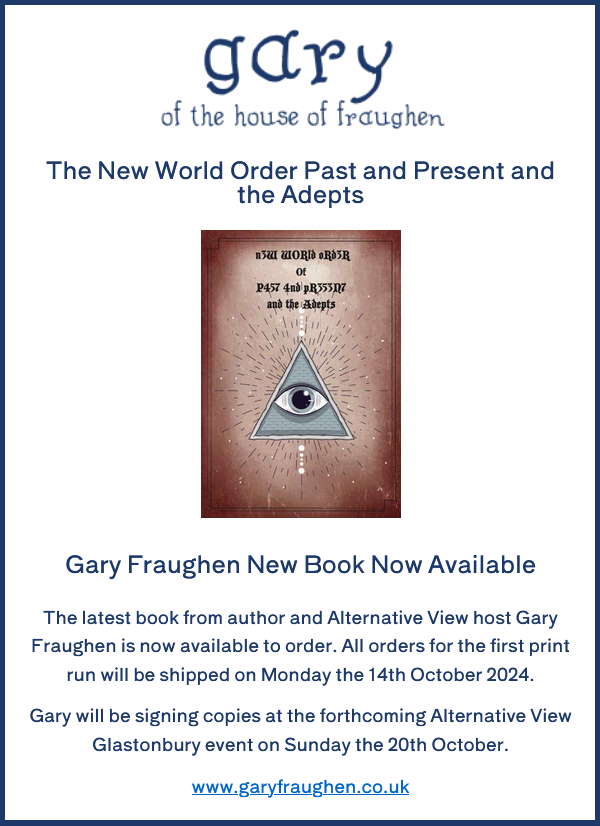World government means whatever they want it to mean
Wed 6:19 am +01:00, 2 Oct 2024The Pact for the Future, adopted Sept. 22 by Consensus, seems to have many interpretations.
Here is a CHD report, quoting many of us. And some brief thoughts of mine.
| |
| |||||||||||||||
https://
I have been struggling to interpret the document for readers, and have gotten bogged down in the weeds describing various issues found within its 66 pages. A few readers want that detail, while most want the thumbnail sketch.
I believe that many people have commented on the Pact but failed to accurately convey its meaning. This makes me wonder if I too am missing the boat, because I am unfamiliar with most earlier treaties and agreements, and thus can only partly contextualize this document. I think David Bell’s quotes in the Defender article I linked above do the best job of conveying its intent and meaning.
Is it a treaty? Maybe. It appears to have been designed to be ambiguous. Some of its passages refer to firm commitments—but only when they were made in earlier documents. Well over 90% of it supports various ideas without any commitment, just paying lip service to peace, justice, fairness, human rights, food security, etc. But it also pays lip service to concepts that are expressed with clear ambiguity or internal contradictions, such as its position on immigration, the “brain drain” and censorship.
Yet the document was ADOPTED. Its ideas can be used in future to pressure nations to go along with later specifics. Occasionally, the language may even be helpful to overcome existing norms, such as the World Trade Organization treaty that stops nations from maintaining large grain surpluses to be used in years of crop failures or for other causes of famine.
There is an effort to “support” the younger generation, and bring them into more decision-making roles. I suspect this is because the UN has a cadre of young people it has brainwashed, while the oldies can see through its BS more easily. So it hopes to replace those who challenge its plans with young people who will more easily go along. This is simply my interpretation.
One needs to see this document in the context of its earlier versions. They would have transferred more power to the UN leadership from the nation states. Those versions were not accepted prior to the meeting by consensus, so this more vanilla version was slotted in and was accepted. That means the UN leadership presumably still seeks those powers, but it took what it could get, now. And may have chosen the language carefully to make claims later that were not anticipated by all the diplomats.
It is probably best if I give a few examples.
You may recall that the early versions of the WHO’s IHR amendments and pandemic treaty did three things that immediately got the WHO in trouble: they crossed out “non-binding” and crossed out human rights. They demanded that nations pass laws to obey their edicts, an obvious sovereignty grab. I believe the crafting of this document has obviously responded to those harsh criticisms by:
a) simply omitting the issue of binding vs non-binding—not addressing it,
b) appeasing us with a statement about supporting sovereignty, and
c) explicitly supporting human rights and international law (after all, they are foundational pillars of the UN). For example, items 12 and 13 of the Pact say:
12. … respecting each other’s sovereignty and territorial integrity…
13. Every commitment in this Pact is fully consistent and aligned with international law, including human rights law. We reaffirm the Universal Declaration of Human Rights 4 and the fundamental freedoms enshrined therein. The implementation of the Pact will enhance the full enjoyment of human rights and dignity for all, which is a key goal…
But you see that item 13 includes the word “commitment”—suggesting nations will in fact be bound by portions of this document, even if the Pact does not explicitly say they will be, and was crafted to not look like a treaty.
Section 22 of the adopted Pact has something new that we may be able to use to fight current WTO rules that restrict nations from maintaining a food surplus and thus current UN rules actually enforce food insecurity:
(a) Support countries and communities affected by food insecurity and all forms of malnutrition through coordinated action, including through the provision of emergency food supplies, programmes, financing, support to agricultural production, by building national resilience to shocks and by ensuring that food and agriculture supply chains function, and markets and trade channels remain free and accessible;
(b) Assist countries in debt distress to manage volatility in international food markets and work in partnership with international financial institutions and the United Nations system to support developing countries affected by food insecurity;
(c) Promote equitable, resilient, inclusive and sustainable agrifood systems so that everyone has access to safe, affordable, sufficient and nutritious food.
Here is another tricky section. For the West it means money will be loaned, not gifted. Similar language has been a bone of contention in past treaties, in which developing nations thought they were getting money, but the West told them no, they were getting loans.
Action 4. We will close the Sustainable Development Goal financing gap in developing countries.
However, the following could be binding, based on prior commitments that are not identified here, with “fulfil” referring to an existing commitment, while “scale up” is vague and provides no specific commitment:
- We decide to:
(c) Scale up and fulfil our respective official development assistance commitments, including the commitment by most developed countries to reach the goal of 0.7 per cent of gross national income for official development assistance and 0.15 to 0.20 per cent of gross national income for official development assistance to least developed countries;
But then item 24 tells nations they must commit to World Trade Organization rules. So can they store grain for a rainy day, or not?
24. We are committed to a rules-based, non-discriminatory, open, fair, inclusive, equitable and transparent multilateral trading system, with the World Trade Organization at its core.
Here is section 25 (e) which remains totally confusing regarding immigration:
25. (e) Maximize the positive contribution of migrants to the sustainable development of origin, transit, destination and host countries and strengthen international partnerships and global cooperation for safe, orderly and regular migration to comprehensively address the drivers of irregular migration and ensure the safety, dignity and human rights of all migrants, regardless of their migration status;
Have I made my point, or would readers appreciate a longer, point by point treatment of this very peculiar document?
The bottom line, I think, is that the powerful plan to tell the rest of us what this Pact really means, and then use the document as a cudgel to bludgeon us with, to get what they want, claiming their “rules-based order” gives them this right. And their is no court save the UN’s own court to which we can go complain that when we agreed to the Pact, we thought it meant something entirely different…















